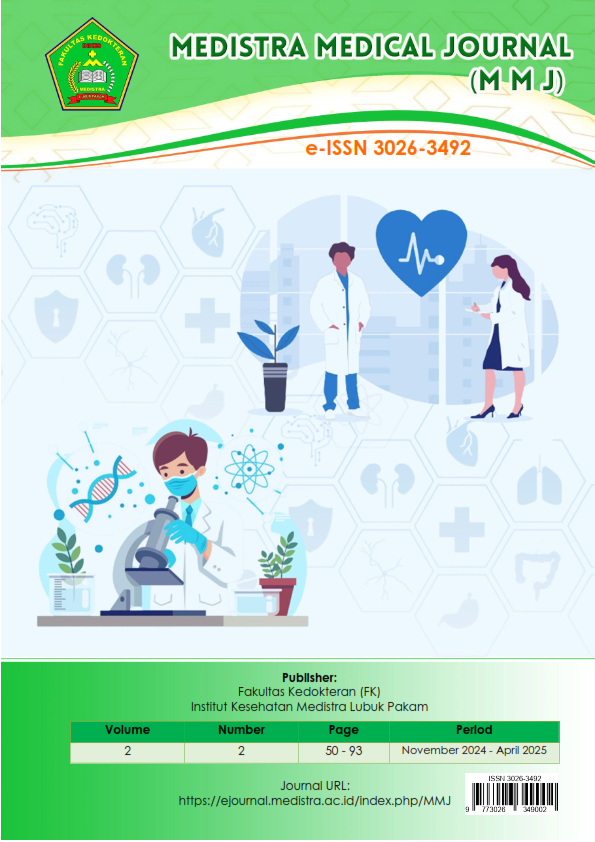Integration of Health Information Systems to Improve Emergency Management in Primary Care at Sembiring General Hospital Deli Tua in 2023
DOI:
https://doi.org/10.35451/tkyc5e36Keywords:
Health Information System Integration, Emergency Management, Primary Services, Sembiring Deli Tua General Hospital.Abstract
Catastrophic emergencies, such as natural disasters, mass accidents, and pandemics, demand preparedness and resilience. Primary care plays a crucial role as the frontline in handling medical emergencies. Speed, accuracy, and strong coordination are key to saving patients' lives. However, challenges often arise, including delays in data recording, difficulty accessing medical records, and suboptimal communication between units. Health information system integration presents an innovation to address these challenges through digital, real-time, and interconnected data management across service units. This study aims to analyze the role of health information system integration in improving emergency management at Sembiring Deli Tua General Hospital in 2023. The research method used a descriptive qualitative design using interviews, observations, and document review techniques. Research informants included Emergency Unit healthcare workers, medical records officers, and hospital information system managers. The results showed that the implementation of a health information system can accelerate the triage process, improve the accuracy of patient records, and strengthen coordination between healthcare workers in critical situations. Consequently, the response to emergency patients becomes more efficient and targeted. Obstacles still encountered include limited technological infrastructure, human resource skills, and suboptimal policy support. In conclusion, health information system integration has proven to contribute significantly to improving emergency management in primary care. Going forward, strengthening digital infrastructure, improving healthcare worker competency, and managerial commitment will be key factors.
References
[1] Azwar, A. (2010). Pengantar Administrasi Kesehatan. Jakarta: Binarupa Aksara.
[2] Depkes RI. (2011). Pedoman Penyelenggaraan Sistem Informasi Rumah Sakit. Jakarta: Direktorat Jenderal Bina Pelayanan Medik.
[3] Kementerian Kesehatan RI. (2019). Sistem Informasi Kesehatan Nasional. Jakarta: Kementerian Kesehatan Republik Indonesia.
[4] Prasetyo, D. (2019). Efektivitas penerapan sistem digital dalam manajemen Unit Gawat Darurat. Jurnal Administrasi Rumah Sakit Indonesia, 5(2), 112–120.
[5] Rahmawati, F. (2022). Digitalisasi komunikasi antar unit dalam pelayanan gawat darurat rumah sakit rujukan bencana. Jurnal Kesehatan Masyarakat, 10(1), 45–56.
[6] Santoso, B. (2021). Implementasi sistem informasi manajemen rumah sakit pada unit gawat darurat. Jurnal Informasi Kesehatan, 8(3), 221–230.
[7] WHO. (2018). Emergency Care System Framework. Geneva: World Health Organization.
[8] Wulandari, S. (2020). Peran sistem informasi kesehatan dalam meningkatkan akurasi diagnosis di rumah sakit tipe C. Jurnal Teknologi Kesehatan, 4(1), 55–63.
[9] Yuliani, H. (2021). Faktor-faktor yang memengaruhi keberhasilan implementasi sistem informasi kesehatan di rumah sakit. Jurnal Manajemen Informasi Kesehatan Indonesia, 9(2), 134–142.
Downloads
Published
Issue
Section
License
Copyright (c) 2025 Ridwanto Situmeang

This work is licensed under a Creative Commons Attribution 4.0 International License.
Copyright in each article is the property of the Author.
















